- Home
- Patrick Robinson
Kilo Class (1998) Page 2
Kilo Class (1998) Read online
Page 2
“One heck of a summer day,” Bob muttered as he shoved his way through the bridge door, listening carefully for the odd noise he had heard below. Tug Mottram had also heard something. He turned to face Lander and spoke formally in the terse language of the US Navy. “Go and check that out will you, Bob. It’s for’ard I think. And for Christ’s sake be careful. Take a coupla guys with you.”
Bob Lander made his way down to the rolling deck and rounded up a couple of seamen from the crew dormitory. All three changed into wet suits and pulled on special combination fur-lined Arctic oilskins, sea boots, and safety harnesses. They clipped onto the steel safety lines and fought their way across the foredeck, where the noise grew louder. Every time the ship rode up, there was a mighty thump against the bow.
“FUCK IT!” roared Bob Lander above the wind. “It’s that FUCKING anchor again. Worked loose just like it did in that sea off Cape Town.” And now he yelled across to Billy Wrightson and Brad Arnold, “WE’LL TIGHTEN UP ON THAT BOTTLE SCREW STOPPER AGAIN. THEN LET’S GET DOWN INTO THE PAINT SHOP AND CHECK FOR DAMAGE.”
Just then a huge wave broke almost lazily over the bow. All three men were suddenly waist deep in the freezing water and were saved from going over the side only by the harnesses, which held them to the safety lines. For the next five minutes they heaved and tugged at the crowbar, tightening the stopper. They then struggled back to the bulkhead door and bumped and lurched their way to the paint shop. Bob Lander was secretly dreading the damage caused by the swinging half-ton anchor crashing against the hull.
As he opened the door to the forepeak area, tons of seawater surged out from the shop, sending all three men flying as it rushed through the lower deck. Lander, back on his feet, ordered Wrightson to have the engineer activate the pumps. Then he moved forward into the paint shop. The gaping hole on the starboard side two feet above the deck told him all he needed to know. The huge anchor had worked its way loose and had bashed a jagged rip into the steel plating of the hull. Worse yet, the seam between two plates had given way. “God knows how far down that rip might travel in a sea like this,” he thought.
Bob Lander knew two things had to be done. Fast. The hole had to be temporarily patched, and Cuttyhunk had to run for cover, out of this dangerous weather to the nearest safe anchorage, and make a proper repair.
He shouted to Brad Arnold to get together a group of six men, including the engineer, to go for’ard and shore up the bow inside the paint room and shut it off securely. “The anchor’s secure for the moment, so get to it, Brad. I don’t want that split to get one inch bigger, and I want the water confined to the one compartment. When you’ve done, set a watchkeeper at the bulkhead door.”
Bob Lander returned to the bridge and told Tug Mottram what the Captain had already guessed. “Bottle screw again, Bob?” Mottram asked.
“Yessir. We have the anchor back tight on the screw and properly wired down. But we have to find some good shelter. There’s a lot of water getting into the paint shop. You can see daylight through a big crack in the hull. Brad’s shoring up around the hole, but we need to weld it, real soon, otherwise I’m afraid it’ll run right down the seam. We can’t do that kinda job out here.”
“Okay, KIT! How far to Kerguelen?”
“Just about eighty miles, sir. At this speed we ought to be in there sometime around 0400.”
“Okay, check the course.”
“Present course is fine, we’ll come in past Rendezvous Rock, twelve miles north, then we can run down the leeward side into Choiseul Bay and hopefully get out of this goddamned weather.”
“This ain’t gonna get any better for a day or two. I guess we’ll have to cope with a beam sea, Kit, but if we stay to the east side of the Ridge, it should be a bit calmer. I don’t suppose the eggheads will be too happy altering course away from their research area.”
“Guess not, sir. But they’d probably be a lot less happy if the bow split and we went to the bottom.”
“This is not a life-threatening situation, Kit,” said Bob Lander quietly. “Just a nuisance we don’t want to get any worse. I’ll go below and check the patch-up operation in the paint shop, sir.”
At 1957 Tug Mottram ordered a short satellite communication to the command center at Woods Hole—“Position 48.25S 67.25E…intended movement 117-12 knots. Going inshore. Proceeding to inspect and repair minor bow damage caused by heavy weather.”
At 1958 he adjusted course for the northwestern headland of the island of Kerguelen. At the end of the earth, and virtually uninhabited, Kerguelen’s icebound terrain is untrammeled by the feet of man, save for a few Frenchmen at their weather station at Port-aux-Français in the remote southeast corner of the island.
No ships pass by this godforsaken rocky wasteland for months on end. No commercial airlines fly overhead. No military power has any interest in checking out the place. As far as anyone knows, no submarine has passed this way in more than half a century. Not even the all-seeing American satellites bother to cast an eye upon this craggy wilderness, which measures eighty miles long from west to east, and fifty-five miles north to south. Save for the huge rookeries of king penguins, and a plague of rabbits, Kerguelen may as well be on the moon. It is a huddle of frozen rocks rising out of the Southern Ocean, perhaps the loneliest place on this planet. It stands stark on the 69 degree easterly line of longitude, latitude 49.30 south. Gale-swept almost nonstop for twelve months of the year, Kerguelen is in fact an archipelago of much smaller islands set into a great uneven L-shaped mainland, and represents the tip of a vast underwater range of mountains that stretches for 1,900 miles, due southeast from latitude 47S right down to the eastern end of the Shackleton Ice Shelf. To the west of this colossal range, known as the Kerguelen-Gaussberg Ridge, the ocean is more than three miles deep. On the other side it falls away to more than four miles.
The whole concept of the place made Tug Mottram shudder. But he knew his job, and he knew how important that unseen range of subsurface mountains was to the Woods Hole scientists aboard his ship.
Vast clouds of tiny shrimplike creatures known as krill, a critical ingredient to the Antarctic food chain, swim in the craggy underwater peaks of the Ridge. The krill are devoured by a large network of deep-sea creatures: fish, squid, seals, and several species of whale, including the humpback. In turn the killer whale eats other whales and seals. Penguins feed on the small fish and squid that eat the krill. Flying birds also eat the krill, the fish, and the squid. The krill are so critical the ecosystem would collapse without them.
The Woods Hole scientific teams had discerned a sharp reduction in the krill population for several years. Professor Townsend believed that the krill were being wiped out by the ultraviolet rays streaming through the hole in the ozone layer that appears over the Antarctic in September. Furthermore his research studies suggested that the problem was worsening, and he now believed the ozone hole was growing steadily larger, much like the tear in Cuttyhunk’s hull.
Townsend’s conclusions had lent a new urgency to this expedition. He planned to take krill samples off the Ridge for around six days and then proceed to the US Antarctic Research Station on McMurdo Sound for another month of tests. He hoped to determine if the phytoplankton on which the krill feed were being harmed by the radiation and endangering entire species of sea creatures. Another sharp reduction of the krill population would signify to Professor Townsend that the ozone hole was increasing. The New York Times had been reporting extensively on Townsend’s research, and the eyes of the world’s environmental agencies were now fixed firmly on the Cuttyhunk scientists.
Tug Mottram’s eyes were fixed on the raging sea now rolling across his starboard beam, the white foam whipping off the wave tops by the gale making grotesque lacy patterns in the troughs.
The anchor was secure, but the men in the forepeak were having a hell of a time trying to stop the sea from coming in. Two big mattresses were jammed over the hole, held in place by heavy timbers cut to length for such an emergency.
Three young crewmen, almost waist-deep in the freezing water, were trying to wedge the beams into place with sledgehammers, but it was so cold they could manage only three minutes at a time. When the ship pitched forward the water rose right over them. The job of plugging the tear in the hull would have taken ten minutes in calm waters, but it was more than an hour before the ship was watertight. Another ten minutes to pump the water out. Two hours to thaw out the shivering seamen.
At midnight the watch changed. Bob Lander came on the bridge, and the Captain, who had ridden out the worst of the storm, headed to his bunk, exhausted. At forty-eight years old, Tug was beginning to feel that he was not quite as indestructible as he had been at twenty-five. And he missed his wife, Jane, who awaited him in the Cape Cod seaport of Truro. In the small hours of an Antarctic morning he found it difficult to sleep and often spent much time reflecting on his divorce from Annie, his first wife, and the terrible, cruel half-truths he had told in order to break free and marry a much younger woman. But when he thought of Jane he usually persuaded himself that it had been worth it.
Outside, the weather was brightening a little, and although the wind still howled at around fifty knots, the snow had stopped falling and there were occasional breaks in the cloud. The worst of the cold front had passed.
On the bridge, Bob Lander would occasionally catch a glimpse of the sun, a fireball on the horizon as Cuttyhunk shouldered her way forward making seventeen knots on southeasterly 135. They would soon be in sight of the great rock of Îlot Rendezvous, which rises 230 feet out of the sea, a rounded granite centurion guarding the northwestern seaway to Kerguelen. It is sometimes referred to as Bligh’s Cap, so named by Captain Cook in 1776 in honor of his sailing master in Resolution during his fourth and final voyage—William Bligh, later of the Bounty. However, maritime law decreed that the French named the rock first, and the official charts reflect this.
Bob Lander spotted Îlot Rendezvous shortly before 0300, almost a half mile off his patched-up starboard bow. He called through to Kit Berens, who had returned to the navigation office at 0200. “Aye, sir,” he replied. “I have a good radar picture. Stay on one thirty-five and look for the point of Cap D’Estaing dead ahead forty minutes from now. There’s deep water right in close, we can get round a half mile off the headland. No sweat.”
“Thanks, Kit. How ’bout some coffee?”
“Okay, sir. Let me just finish plotting us into Choiseul. I’ll be right there. The chart is showing there’s a few kelp beds in the bay, and I think we ought to give ’em a damned wide berth. I hate that stuff.”
“So do I, Kit. You better keep at it for a bit. Don’t worry about me. I’ll just stand here and die of thirst.”
Kit Berens chuckled. He was loving his first great ocean voyage and was deeply grateful to Tug Mottram for giving him a chance. Tug reminded him of his own father. They were both around six feet three inches tall, both easygoing men with a lot of dark curly hair and deeply tanned outdoor faces. Tug’s was forged on the world’s oceans, Kit’s dad’s was the result of a lifetime spent in south Texas oil fields working as a driller. In Kit’s opinion they were both guys you could count on. He liked that.
N.W. KERGUELEN. The icy bays and fjords of the island at the end of the earth—where Cuttyhunk sought shelter.
The young navigator pressed his dividers onto the chart against a steel ruler. “There’s a damn great flat-topped mountain on the headland,” he called to Bob. “It’s marked right here as the Bird Table. It’s probably the first thing we’ll see. We’ll change course a few degrees southerly right there. That way we’ll see straight up into Christmas Harbor. I don’t think it’ll give us enough shelter from the wind, though. We’ll have to run on a bit farther.”
“What the hell’s Christmas Harbor? I thought the whole place was French. Why isn’t it called Noël Pointe or something?”
“My notes say it was named by Captain Cook. He pulled in there on Christmas Day, 1776. The French named it Baie de l’Oiseau around that same time. Shouldn’t be surprised if no one’s been there since. I’m telling you, this place is des-o-late.”
At 0337 Bob Lander steered Cuttyhunk around Cap D’Estaing. They were in daylight now, but the wind was still hooting out of the Antarctic, and it swept around the great northwestern headland of Kerguelen. Fifteen minutes later Kit Berens was gazing up at the turmoil of white-capped ocean swirling through Christmas Harbor.
“Forget that,” he said. “I’d say the wind was blowing right around D’Estaing but somehow it’s also sweeping round that damn great mountain and into the harbor from the other direction. It’s like a wind tunnel in there. The katabatics are gonna give us a problem. We’re gonna have to run right up into one of the fjords.”
“Fjords?” said Bob. “I thought they were more or less a northern thing.”
“According to this chart, Kerguelen’s got more fjords than Norway,” said Kit. “I’ve been studying it for hours now. The whole place must have been a succession of glaciers once. The fjords here cut so deep back into the land I can’t find one spot on the whole island more than about eleven miles from saltwater. I bet if you measured every inch of the contiguous coastline it’d be about as long as Africa’s!”
Lander laughed. He liked the adventurous young Texan. And he liked the way he always knew a lot about where they were, not just the position, course, speed, and distances. It was typical of Kit to know that Captains James Cook and William Bligh had sailed through these waters a couple of hundred years ago.
Just then Tug Mottram returned to the bridge, bang on time, as he always was. “Morning men,” he said. “Is this goddamned wind ever gonna ease up?”
“Not yet, anyway,” said Lander. “The cold front is still right here. I guess we should be thankful the darned blizzard’s gone through. Wind’s still sou’westerly, and it’s freezing out there.”
“Kit, you picked a spot for us?” asked the Captain.
The Texan stared at his chart. “Kind of,” he said slowly, without looking up. “About another eight miles southwest there’s a deep inlet called Baie Blanche—a fjord really, ten miles long. A mile wide and deep, up to four hundred feet. At the end it forks left into Baie de Français, which I think will be sheltered. But it also turns right into another fjord, Baie du Repos. This one’s about eight miles long, narrow but very deep. The mountain range on the western side should give some shelter. The swells shouldn’t come in too bad, not that far up, and I don’t see any kelp marked. I’m recommending we get in there.”
“Sounds good to me. Oh, Bob, on your way to your bunk tell the engineers to be ready to start work on the hull at around 0800, will you?”
“Okay, sir. I’m just gonna catch an hour’s sleep. Then I’ll be right back for a bit of sightseeing.”
Kit Berens finally looked up and informed the Captain he was about to put a message on the satellite, stating their position and describing the minor repairs that would delay them for less than a day.
In the communications room, positioned on the port side of the wide bridge, Dick Elkins, a former television repairman from Boston, was talking to a weather station when Kit Berens dropped his message on the desk. “Intercontinental. Direct to Woods Hole,” Kit said.
And now, at last, they were getting a lee. The water was flatter, and Cuttyhunk steadied, sheltered by the rising foothills on the starboard side as they ran down to the Baie Blanche.
Kit Berens was back hunched over his charts, his steel ruler sweeping across the white, blue, and yellow sheets. He finally spoke. “Sir, I wanna give you three facts.”
“Shoot,” said the Captain.
“Right. If you left this island and headed due north, you would not hit land for eight thousand five hundred miles and it would be the south coast of Pakistan. If you went due west you’d go another eight thousand five hundred miles to the southern coastline of Argentina. And if you went east, you’d go six thousand miles, passing to the south of New Zealand and then six thousand five hundred
more to the coast of Chile. My assessment is therefore that right now we’re at the ass-end of the goddamned earth.”
Tug Mottram laughed loudly. “How about south?”
“That, sir, is a total fucking nightmare. Five hundred miles into the West Ice Shelf, which guards the Astrid Coast. That’s the true Antarctic coastline. Colder and more windswept even than here. But they do have something else in common, Kerguelen and the Antarctic.”
“They do? What’s that?”
“No human being has ever been born in either place.”
“Jesus.”
At 0600 they swung into the first wide fjord, Baie Blanche, and immediately became aware that the wind had stopped and that the water was calm and tideless. There were four hundred feet below the keel. Tug Mottram cut the speed back because in these very cold, deep Antarctic bays, you could blunder into the most dangerous kind of small iceberg—the ones formed of transparent meltwater ice, which float heavily below the surface, absorbing the somber, morose shades of the surrounding seas. To the eye they look bluish black, and unlike white glacier ice, they are almost impossible to see.

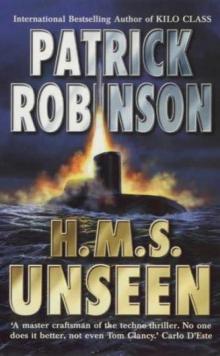 H.M.S. Unseen am-3
H.M.S. Unseen am-3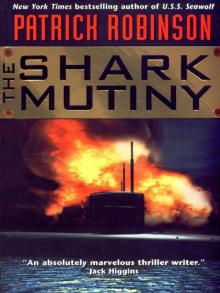 The Shark Mutiny (2001)
The Shark Mutiny (2001)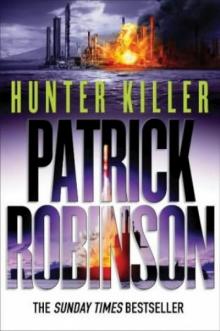 Hunter Killer am-8
Hunter Killer am-8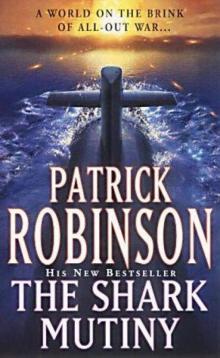 The Shark Mutiny am-5
The Shark Mutiny am-5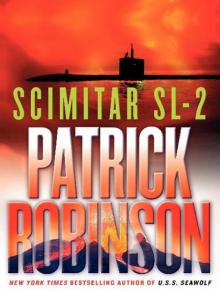 Scimitar SL-2
Scimitar SL-2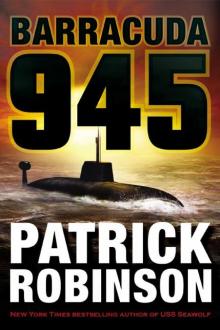 Barracuda 945 am-6
Barracuda 945 am-6 Hunter Killer
Hunter Killer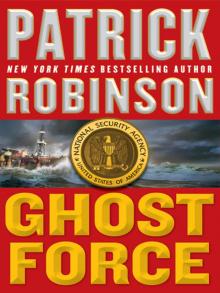 Ghost Force
Ghost Force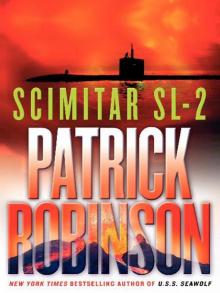 Scimitar SL-2 (2004)
Scimitar SL-2 (2004) Kilo Class am-2
Kilo Class am-2 The Lion of Sabray
The Lion of Sabray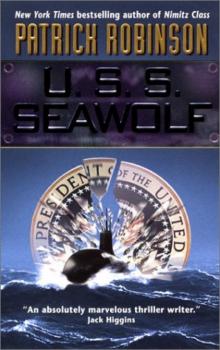 U.S.S. Seawolf am-4
U.S.S. Seawolf am-4 Ghost Force am-9
Ghost Force am-9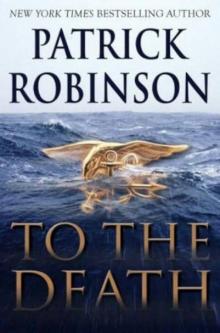 To the Death am-10
To the Death am-10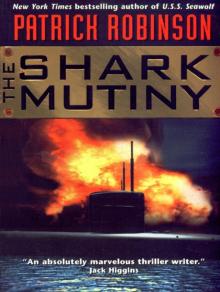 The Shark Mutiny
The Shark Mutiny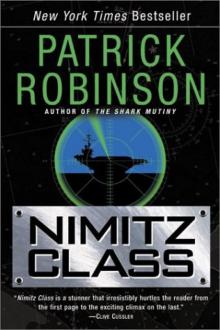 Nimitz Class am-1
Nimitz Class am-1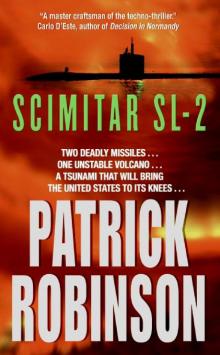 Scimitar SL-2 am-7
Scimitar SL-2 am-7 Barracuda 945
Barracuda 945 Intercept
Intercept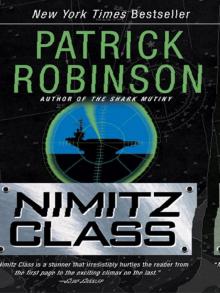 Nimitz Class (1997)
Nimitz Class (1997)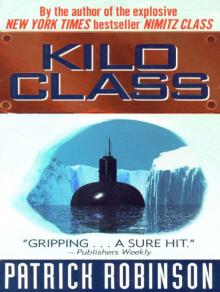 Kilo Class
Kilo Class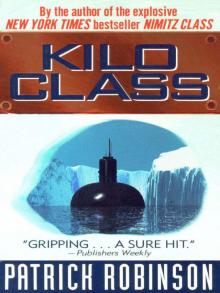 Kilo Class (1998)
Kilo Class (1998) Diamondhead
Diamondhead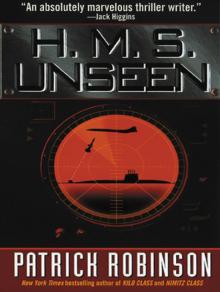 H.M.S. Unseen
H.M.S. Unseen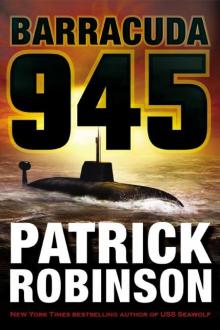 Barracuda 945 (2003)
Barracuda 945 (2003)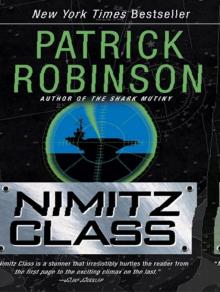 Nimitz Class
Nimitz Class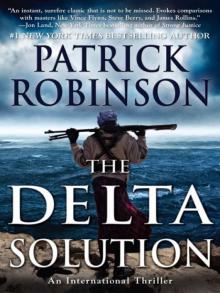 The Delta Solution
The Delta Solution U.S.S. Seawolf
U.S.S. Seawolf